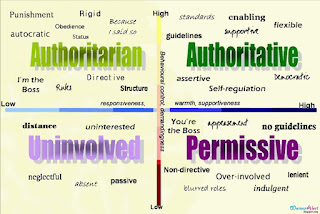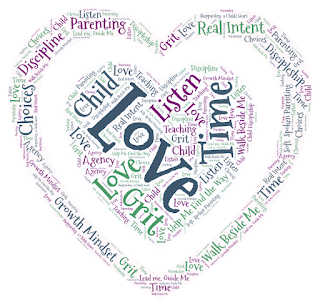The Parenting Pyramid
There is no one-size-fits-all approach to parenting. However, the parenting pyramid creates a paradigm shift. Instead of parents asking, "What do we do when things go wrong" to "How can we help things go right?"
Parents weren't meant to spend most of their time correcting their children.
What? How can that be? Is this even a possibility?
If parents weren't meant to spend most of their time correcting their children, where should they spend most of their time?
What is the parenting pyramid?
The parenting pyramid is a model for raising children created by the Arbinger Institute(1998). The parenting pyramid is structured with the idea that children have four basic needs: love, nurturing, discipline, guidance, and structure. This pyramid is focused on helping things go right at home and being proactive in our parenting instead of reactive, no matter what situations arise. It helps parents learn to act instead of being acted upon.

Picture Credit: The Arbinger Institute
The Parenting Pyramid has 5 sections: correction, teaching, parent/child relationships, husband/wife relationships, and personal ways of being.
Correction
Is the smallest part of parenting. The most important fact to understand about correction is this: the effectiveness of correcting our children, whichever method we use, will always depend on how effective our previous teaching has been. The more effective we teach our children, the easier to correct them when necessary. If we teach effectively, our correction will merely be an extension of our teaching.
- Correction is an extension of our teaching if teaching is done well.
- The particular method of discipline used will matter less because we use it less often.
- Discipline is more like teaching than punishment.
- Parents will see their children's undesirable behaviors as an opportunity to teach; what they have not yet understood or learned; rather than as irritations and bad behavior that require correction.
- The emotional character of the parent is patient, loving, supportive, and helpful.
The most important thing we can remember about correction is that it depends on how effectively we teach. Correction is an extension of teaching.
Teaching
Children learn best if they feel loved. No matter how much time we spend teaching our kids will matter if they don't like us. It is hard for our children to like us if they do not feel we love them. Before we can effectively teach our children, we must build relationships of trust with them. Love = Time. Spending quality time with our children will increase the quality of our relationships, and the quality of our relationships will foster and nurture love.
- Teaching takes time, love, and trust.
- Children must know they are loved and safe to learn well.
- Effective teaching requires healthy relationships between the teacher and the learner.
- Teach what is acceptable and unacceptable
- Teach what is appropriate and inappropriate
- Teach clear boundaries, expectations and rules
- Teach what happens when rules are broken
- Teaching requires patience and time
- Teaching provides instruction, guidance, direction, and example daily.
The effectiveness of our teaching depends on the quality of our relationships.
Parent/Child Relationships
This layer of the pyramid teaches that how we are connected with our children will affect how well our teaching will be effective. Our children will not be open to our teaching if we do not have a close relationship with them. Strong, healthy relationships are created through quality time and clear, open communication. Parents listen to understand their children's needs and then do the work necessary to provide them with them.
- The strength of our connections to our children will determine how our teachings are accepted.
- Children are more likely to be open to being taught when we have close relationships with them.
- Parents need to seek to understand their children's needs, then provide those needs.
- Cultivate mutual respect
- Children are likelier to trust us if they believe we have their best interests at heart.
We must invest in strengthening our relationships with our children if we want to teach them or influence them.
Husband/Wife Relationships
The quality of our relationship with our spouse also affects our relationships with our children. While it may not seem like these two relationships are interconnected, they most certainly are. Our relationship with our spouse has a cause-and-effect relationship on our relationships with our children. If there is conflict in the marriage relationship, one way or another, the children get caught in the middle of it. High levels of conflict in marriage create stress for the entire family.
- Our relationship with our spouse, directly and indirectly, affects our relationships with our children.
- Parent's relationship with each other is interconnected with their relationships with their children.
- Marriage conflict affects the entire family and creates a stressful environment.
- One way or another, the children get caught in the middle of their parent's conflicts.
As we seek peace and understanding with our spouse and improve our marriage, we can have more stable connected relationships with our children.
Personal Ways of Being
The bottom layer of the pyramid is the foundational and deepest layer of the parenting pyramid; it is the root of the family tree. This is our personal way of being. This is "who we are" as a person. Who we are is a function of our deepest desires, attitudes, core beliefs, and values. These ways of being; shape the lens through which we see the world and by which we judge the world.
- Who are we as a person?
- What are our ways of being?
- The ways we are is the foundation of the parenting pyramid.
- Who we are shapes the lens by which we experience the world
- Our way of being is our deepest desires, attitudes, core beliefs, and values
Our "way of being, Who we are as a person" lies at the foundation, the very roots of our family tree. Our personal way of being directly affects every other part of the pyramid.
- Who are we as a person?
- What are our ways of being?
- The ways we are is the foundation of the parenting pyramid.
- Who we are shapes the lens by which we experience the world
- Our way of being is our deepest desires, attitudes, core beliefs, and values
Applying the Parenting Pyramid
The first four levels of the pyramid are all about what helps things go right in relationships. They focus on our individual goodness and the quality of our relationships within our marriage relationship, the relationships with our children, and the effectiveness of our teaching. These are the foundations of good parenting. The order matters. They are also the foundation for how we correct our children. Without having these things in the right place in our foundation, our correction will not be done right. The effectiveness at the top of this pyramid depends heavily on how well we apply these principles of the parenting pyramid from the bottom up.
References:
Arbinger Institute. (1998) The Parenting Pyramid.
Fernandez , E. (2023, July 12). The best of all positive parenting solutions: The parenting pyramid. The Positive MOM by Elayna Fernandez. https://www.thepositivemom.com/positive-parenting-solutions-the-parenting-pyramid
For further study:
Molly Wright: How Every Child Can Thrive by Five


Comments
Post a Comment